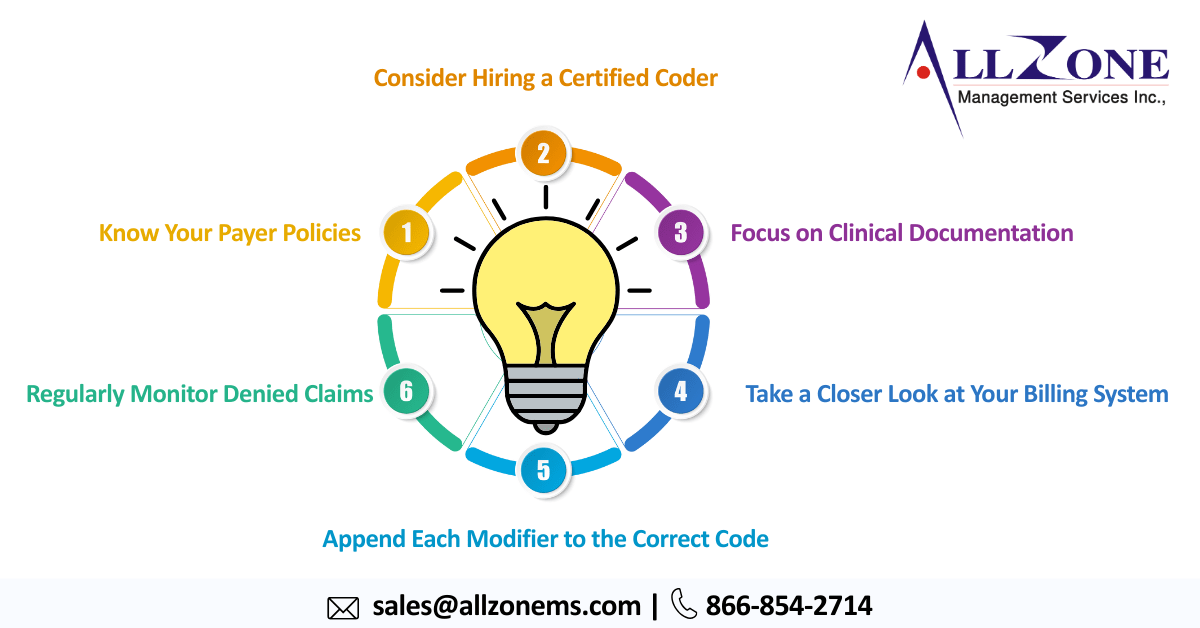Turning submitted medical claims into actual payments is a crucial phase for any healthcare practice. The time it takes to receive these payments directly impacts your financial health and operational efficiency. To maintain a healthy revenue cycle, it’s essential to reduce AR turnaround time and aim to clear your Accounts Receivable (AR) within a 30-day […]
In medical coding, CPT modifier are vital for accurate reimbursement of healthcare services. These special codes, attached to primary procedure codes, provide additional details about the complexity or extent of a service. However, using modifiers incorrectly can lead to claim denials and lost revenue. This blog post shares six key tips to help you get […]
Value-based payment models, including accountable care organizations, bundled payment models, and capitation models, can generate savings for providers and limit healthcare spending. As healthcare spending escalates in the US, stakeholders have started looking at value-based payment models to address rising costs, but many payments are still tied to fee-for-service models, according to a Health Affairs […]
With Tax Day on the horizon, don’t fall into these specific traps. Our last installment provided some details and basic rules every doctor should know about tax planning, including who is responsible for the information on your tax return, details about what income you have to report, and a look at the sales techniques promoters […]
On December 27, 2020, the No Surprises Act was signed into law as part of the Consolidated Appropriations Act, 2021. In July and October 2021, respectively, the Department of Health and Human Services, the Department of Labor, the Department of the Treasury and the Office of Personnel Management (the Departments) issued two Interim Final […]
To excel in value-based care, providers must lean on strategies for managing population health and skillful risk stratification. Amid the COVID-19 pandemic, organizations observed the ramifications of fee-for-service, leading to communication and revenue challenges for both providers and patients. While value-based care is not a novel idea, the pandemic greatly accelerated the adoption of this […]
CMS says it the goal is to support health equity while focusing on high-quality person-centered care. Increased leverage of telehealth for behavioral care, diabetes prevention and mitigation, and enhanced payment for vaccine administration were three out of many priorities cited by federal officials who announced the release of the Centers for Medicare & Medicaid […]
Device agnostic digital patient intake; buy now, pay later; compassionate billing; and AI-enabled customizable payment plans are four trends that rev cycle leaders should watch as the pandemic rages on. Despite promises of a “hot-vaxxed summer,” the COVID-19 pandemic is raging on, more forcefully in some places than ever before. It’s also continuing to take […]
Starting January 1, 2022, healthcare providers will be subject to a new surprise billing law that makes it illegal for providers to bill patients more than in-network cost-sharing for out-of-network services and establishes an arbitration process to resolve unexpected out-of-network charges. The law, the No Surprises Act, was passed in December 2020 as part of […]
Healthcare consumerism is on the rise , as patients report the desire to use telehealth and contactless payment options post-COVID-19. However there are disconnects between payer, provider, and consumer expectations, according to the eleventh annual Trends in Healthcare Payments Report from InstaMed. The report explores how COVID-19 has accelerated many trends that have improved the consumer experience […]










